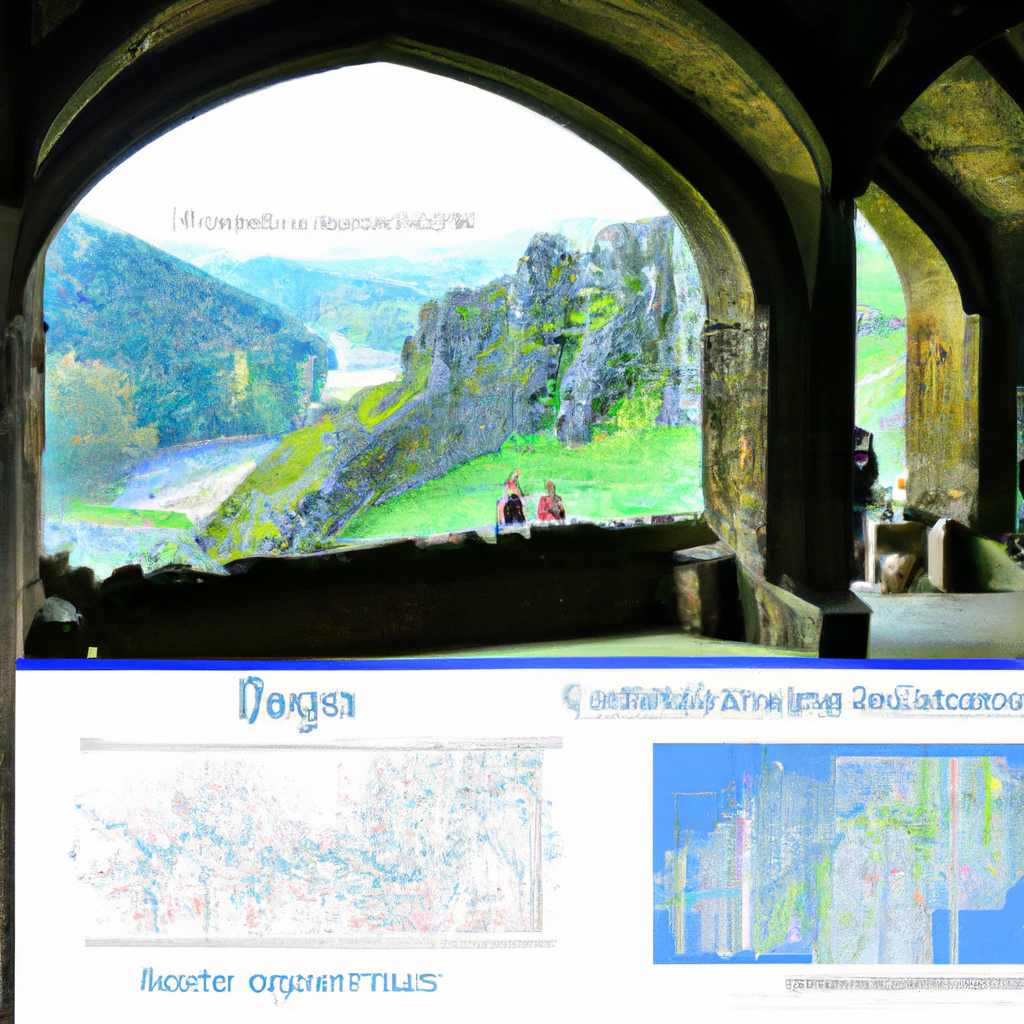So you’re looking for a journey through time, longing to immerse yourself in the stories of the past, and discover the treasures that lie within historical landmarks and sites. Well, my friend, prepare to be captivated. This article ‘A Traveler’s Guide to Ancient Wonders and Iconic Historical Landmarks’ will serve as your guiding compass, leading you to explore the rich tapestry of our shared heritage. From ancient wonders that whisper tales of forgotten civilizations, to grand castles that have witnessed both triumph and tragedy, get ready to embark on a remarkable adventure that will leave you in awe of the wonders that history has bestowed upon us.

Historical Landmarks and Sites
Historical landmarks and sites stand as living testaments to the past and offer a glimpse into the rich tapestry of human history. These extraordinary places not only bear witness to significant events and achievements, but they also hold immense cultural and educational value. From ancient ruins to iconic structures, historical landmarks captivate our imagination and provide valuable insights into different civilizations and eras. In this comprehensive article, we will delve into the importance of historical landmarks, the preservation of cultural heritage, the architectural wonders they showcase, and their role in education and tourism.
Discovering the Importance of Historical Landmarks
Uncovering the Past through Landmarks
Historical landmarks serve as windows into the past, offering a unique opportunity to discover and understand the events that have shaped our world. Whether it is the remnants of an ancient civilization or a site of historical significance, these landmarks allow us to connect with our roots and gain a deeper appreciation for our collective history. Exploring these sites provides an immersive and tangible experience that brings history to life.
Historical Significance of Landmarks
Each historical landmark carries its own unique story, often representing significant events or achievements. For example, the Great Wall of China symbolizes centuries of engineering prowess and the country’s resilience, protecting its borders from invasions. Likewise, the Pyramids of Giza stand as a symbol of the ancient Egyptian civilization’s architectural expertise and religious beliefs. Understanding the historical significance of these landmarks adds meaning and depth to our understanding of the world.
Preserving Cultural Identity through Landmarks
By preserving historical landmarks, we safeguard our cultural identity and heritage for future generations. These sites are the tangible remains of the narratives, traditions, and achievements of our ancestors. They convey a sense of continuity and enable us to connect with the cultural roots that have shaped our societies. Additionally, the preservation of these landmarks fosters a collective sense of pride and cultural identity within communities.
Preserving the Cultural Heritage of Historical Sites
Importance of Cultural Preservation
Preserving the cultural heritage of historical sites is of paramount importance, as it ensures the continuity of our shared history. These sites are vulnerable to natural disasters, climate change, urban development, and neglect, making it imperative to safeguard them from destruction or irreparable damage. Cultural preservation efforts not only protect physical structures but also the intangible aspects, such as traditions, rituals, and stories associated with these landmarks.
Challenges in Preserving Historical Sites
Preserving historical sites comes with its fair share of challenges. Financial constraints, lack of public awareness, and limited resources often pose obstacles to effective conservation. Additionally, striking a balance between necessary restoration and maintaining the authenticity and integrity of the site can be a delicate task. These challenges necessitate comprehensive planning, collaboration across various disciplines, and community involvement to ensure the long-term preservation of historical landmarks.
Conservation Efforts and Restoration Projects
Across the globe, numerous conservation efforts and restoration projects are taking place to protect and maintain historical landmarks. Organizations such as UNESCO (United Nations Educational, Scientific and Cultural Organization) play a crucial role in identifying, preserving, and promoting world heritage sites. These efforts involve skilled professionals, volunteers, and local communities working together to implement sustainable practices and restore these sites to their former glory.
Understanding the Architecture of Historical Landmarks
Architectural Styles in Historical Landmarks
The architecture of historical landmarks reflects the artistic and technological achievements of the time. From the grandeur of Gothic cathedrals to the intricate carvings of ancient temples, each architectural style captures the essence of the era in which it was constructed. Exploring the diverse architectural styles showcased in historical landmarks offers insight into the craftsmanship and design principles employed by our ancestors.
Influence of Historical Events on Architecture
Historical events often shape architectural styles, as they reflect the prevailing cultural, social, and political contexts of a particular time period. For example, the Renaissance period witnessed a revival of classical elements and a focus on balance and proportion, influenced by the rediscovery of classical Greek and Roman architecture. The preservation and study of these architectural transformations allow us to understand the impact of historical events on the built environment.
Symbolism and Design Elements in Landmarks
Historical landmarks often incorporate symbolic elements and design features that convey deeper meanings. From the intricate carvings of mythical creatures on ancient temples to the use of specific materials to represent cultural values, these aspects tell stories and evoke emotions. Understanding the symbolism and design elements within these landmarks enhances our appreciation of their aesthetic and cultural significance.

Exploring Ancient Ruins and Monuments
Journeying into the Ancient World
Exploring ancient ruins and monuments is like embarking on a time-traveling journey that transports us back to civilizations long gone. From towering Mayan pyramids in Central America to the majestic ruins of Angkor Wat in Cambodia, these sites offer glimpses into the ingenuity and creativity of ancient societies. Walking in the footsteps of our predecessors allows us to marvel at their achievements and gain a deeper understanding of their way of life.
Famous Ruins and Their Historical Significance
Certain ruins hold immense historical significance and are recognized worldwide for their architectural brilliance or cultural contributions. Machu Picchu, nestled high in the Peruvian Andes, is renowned for its breathtaking setting and the engineering marvels of the Inca civilization. The Colosseum in Rome stands as a testament to the grandeur of ancient Roman entertainment and engineering. Exploring these famous ruins brings history to life and provides a tangible connection to the past.
Reconstructing History through Archaeological Sites
Archaeological sites play a crucial role in reconstructing history and adding new chapters to our understanding of the past. Through meticulous excavation and analysis, archaeologists unearth artifacts, structures, and remains that offer unique insights into ancient civilizations. These sites serve as living laboratories for researchers and scholars, shedding light on forgotten cultures and allowing us to fill gaps in our historical narratives.
Famous Historical Landmarks around the World
The Great Wall of China
As one of the world’s most iconic landmarks, the Great Wall of China stretches across the northern borders of China, encompassing thousands of miles. Built over centuries, the wall represents human perseverance and ingenuity in defending against invasions. With its breathtaking views and historical significance, it continues to captivate visitors from around the globe.
Machu Picchu
Nestled high in the Andes Mountains of Peru, Machu Picchu is an extraordinary ancient city preserved amidst lush green forests. This mystical Inca site showcases masterful stone craftsmanship and intricate terraces while offering breathtaking panoramic views. In recognition of its significance, Machu Picchu was designated as a UNESCO World Heritage site and is a bucket-list destination for many travelers.
Pyramids of Giza
The Pyramids of Giza, the sole survivors of the Seven Wonders of the Ancient World, stand tall on the outskirts of Cairo, Egypt. Constructed as grand tombs for the pharaohs, these awe-inspiring structures are a testament to ancient Egyptian engineering prowess and religious beliefs. The Great Pyramid of Giza, built for Pharaoh Khufu, remains the largest pyramid ever constructed and continues to inspire wonder and curiosity.
Taj Mahal
The Taj Mahal, located in Agra, India, is one of the most exquisite examples of Mughal architecture. This mausoleum, built by Emperor Shah Jahan in memory of his beloved wife Mumtaz Mahal, is a UNESCO World Heritage site and serves as a symbol of eternal love. The graceful white marble structure, adorned with intricate inlays and gardens, captures the imagination of millions of visitors each year.
Colosseum
The Colosseum in Rome, Italy, stands as a testament to the grandeur of ancient Roman architecture and engineering. This elliptical amphitheater once hosted spectacular gladiatorial contests, mock sea battles, and other events. Today, the Colosseum attracts visitors who marvel at its colossal size and immerse themselves in the rich history and cultural legacy of the Roman Empire.
Eiffel Tower
Arguably the most recognizable landmark in Paris, France, the Eiffel Tower stands as an iconic symbol of romance and elegance. Gustave Eiffel’s masterpiece, constructed for the 1889 Paris Exposition, continues to awe visitors with its towering presence and breathtaking views of the city. The Eiffel Tower serves as a testament to human engineering achievements and has become synonymous with the city of love.
Acropolis of Athens
Perched high above Athens, Greece, the Acropolis is a collection of ancient structures dating back to the 5th century BCE. The most famous of these is the Parthenon, a temple dedicated to the goddess Athena. These architectural marvels continue to inspire awe with their Doric columns and intricate friezes, leaving visitors in wonder at the artistic and cultural achievements of ancient Greece.
Stonehenge
Located in Wiltshire, England, Stonehenge is an enigmatic prehistoric monument composed of massive standing stones. Its purpose and exact origins remain shrouded in mystery, captivating visitors and researchers alike. The site’s astronomical alignments and ancient construction techniques continue to fuel speculation and intrigue, making it one of the world’s most famous archaeological sites.
Statue of Liberty
Standing tall on Liberty Island in New York Harbor, the Statue of Liberty is a symbol of freedom, democracy, and friendship. Given as a gift from France to the United States, this monumental sculpture welcomes immigrants and represents the ideals upon which America was founded. The Statue of Liberty has become an enduring icon of hope and serves as a reminder of the importance of human rights and liberty.
Petra
Petra, an ancient city in present-day Jordan, has captured the imagination of explorers and travelers for centuries. Carved into rose-red sandstone cliffs, the architecture of Petra demonstrates the skill and creativity of the Nabateans, an ancient Arab civilization. The Treasury, the most famous structure within Petra, serves as an awe-inspiring testament to the city’s architectural magnificence.

The Role of Historical Sites in Education
Learning from the Past through Landmarks
Historical landmarks serve as invaluable educational resources, offering a firsthand encounter with the past. Students and visitors of all ages have the opportunity to engage with history in a tangible and immersive way. By exploring historical sites, individuals can develop a deeper understanding of historical events, cultural practices, and societal transformations.
Interactive Learning Experiences at Historical Sites
Many historical sites provide interactive learning experiences that cater to various learning styles and preferences. Through guided tours, audio guides, interactive displays, and educational programs, visitors can delve deeper into the significance of these landmarks. Whether it’s exploring exhibits in a museum or participating in hands-on activities, historical sites offer engaging and memorable educational experiences.
Promoting Historical Literacy in Schools
Visiting historical landmarks plays a crucial role in promoting historical literacy in schools. Field trips to these sites provide students with an opportunity to connect classroom learning with real-world examples and experiences. By witnessing the physical remnants of history, students are better able to grasp the significance and impact of historical events, fostering a lifelong appreciation for the subject.
Finding Hidden Gems: Lesser-known Historical Landmarks
Off-the-Beaten-Path Discoveries
While famous historical landmarks rightfully receive global recognition, there is much to discover beyond the well-trodden paths. Lesser-known historical landmarks offer a chance to explore hidden gems and uncover lesser-known stories. These hidden treasures provide a sense of adventure and surprise for those who seek to dig deeper into the world’s rich historical tapestry.
Unearthing Local History
In every corner of the world, countless historical landmarks remain known only to locals and a handful of intrepid explorers. These sites hold immense significance within the community, offering insights into local history, traditions, and cultural heritage. By venturing off the tourist map and engaging with local communities, visitors can uncover captivating stories and gain a deeper understanding of a region’s unique past.
Exploring Underrated Landmarks
Underrated landmarks, often overshadowed by their more famous counterparts, still possess their own unique charm and historical value. These sites may be less crowded and afford visitors the opportunity for a more intimate and immersive experience. From forgotten castles to abandoned ancient settlements, exploring underrated landmarks can be a rewarding journey of discovery and surprise.

Historical Landmarks as Tourist Attractions
Global Appeal of Historical Landmarks
Historical landmarks have enduring global appeal, drawing tourists from all corners of the world. The allure lies in their ability to transport visitors to different time periods, offering a tangible connection to the past. From UNESCO World Heritage sites to iconic structures, these landmarks consistently rank among the top attractions on travelers’ itineraries, making them a driving force in international tourism.
Economic Impact of Cultural Tourism
Historical landmarks play a significant role in boosting local economies through cultural tourism. The influx of tourists brings economic benefits, supporting local businesses such as hotels, restaurants, and souvenir shops. Additionally, the preservation and maintenance of these landmarks create employment opportunities for local communities, contributing to sustainable development and economic growth.
Preserving Landmarks in the Face of High Visitor Numbers
While tourism offers numerous benefits to historical landmarks, managing large numbers of visitors can also present challenges. The increased footfall puts a strain on infrastructure, risks damage to delicate structures, and impacts the overall visitor experience. Effective management strategies, including crowd control measures, timed entry systems, and sustainable tourism practices, are crucial to ensuring the long-term preservation of these cherished sites.
The Impact of Tourism on Historical Landmarks
Balancing Tourism and Preservation
Finding a balance between tourism and preservation is a complex task that requires careful planning and management. Striking the right balance ensures that historical landmarks can continue to welcome and educate visitors while safeguarding their fragile cultural and physical integrity. Responsible tourism practices, such as limiting visitor numbers, implementing sustainable infrastructure, and promoting respectful behavior, are essential in maintaining the long-term sustainability of these sites.
Sustainable Tourism Practices
The preservation of historical landmarks and sustainability go hand in hand. Sustainable tourism practices aim to minimize environmental impact, protect cultural heritage, and benefit local communities. From employing eco-friendly transportation to supporting local businesses and communities, sustainable tourism ensures that future generations can continue to experience the marvels of historical landmarks.
Ensuring Conservation and Accessibility
As historical landmarks attract visitors from all walks of life, ensuring accessibility for all individuals becomes crucial. This includes making accommodations and provisions for individuals with disabilities, as well as providing multilingual information and interactive exhibits that cater to diverse audiences. By prioritizing conservation efforts alongside accessibility, historical landmarks can offer enriching experiences to visitors while preserving their integrity for years to come.
In conclusion, historical landmarks and sites hold immense value as witnesses to the past, repositories of cultural heritage, and educational resources. They provide a gateway to understanding the events, achievements, and traditions that have shaped our world. Through the preservation of these sites, we ensure that future generations can continue to explore and learn from the rich tapestry of human history. By visiting historical landmarks, whether famous or lesser-known, we not only embark on extraordinary journeys but also support their preservation, making a positive impact on cultural heritage and sustaining the invaluable stories they hold. Let us cherish and celebrate these remarkable landmarks, as they are truly windows into our collective past.


